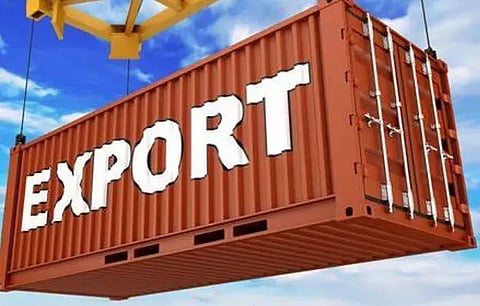
- Home
- Live Blog
- Breaking News
- Top Headlines
- Cities
- NE News
- Sentinel Media
- Sports
- Education
- Jobs

Changing geopolitics and India's deepening bilateral and trilateral relations with South Asian and ASEAN countries have put the spotlight on export potential of the country's Northeast region. The region accounting for only 0.15 per cent of India's total exports even after three decades of India's Look East/Act East policy presents a dismal picture. The Ministry of Commerce and Industry impressing upon the states to formulate comprehensive export strategy led to seven states preparing their export strategies. The export strategies of these states having synergy are critical to building value chains of different products. This is also required to present the region as a single commercial hub with export-oriented potential to attract investment needed to build the ecosystem. States identifying items with export potential need to be followed up with creation of easily accessible databases with updated information on available export markets, list of exporters, logistics support, documents required etc., so that local entrepreneurs can explore export markets of local produce. The exporters from the region are eligible for priority sector funding at 90 per cent of the actual expenditure and making this information readily available can motivate more entrepreneurs to dream big. Under the Trade Infrastructure for Export Scheme Central Government assistance of up to 80 per cent of total equity is provided in the form of grant-in-aid in the total project cost for export infrastructure projects located in the region. The total financial outlay for the five-year period from 2021-22 to 2025-26 is Rs 360 crore for all the eight states. These states can avail the scheme through their implementing agencies, for infrastructure projects with significant export linkages like Border Haats, land customs stations, quality testing and certification labs, cold chains, trade promotion centres, export warehousing and packaging, Special Economic Zones and ports/airports cargo terminal use. Official data show that since 2019-20, Assam has taken up two projects for which Rs 15.42 crore has been released, while Rs 5.63 crore has been disbursed to Manipur as subsequent instalments for a previously sanctioned project/new project approved in previous financial year (2018-19). Even for Assam, the two projects were approved in 2019-20 and no new projects were taken up from 2020-21 till July, 2022, while for Sikkim one new project for Rs 8.87 crore for setting up a spices complex was approved in 2020-21 which speak volume, about the ground realities about implementation status of various schemes initiated by the Central government to promote exports from the Northeast. State strategies need to identify the gaps in policy, schemes and implementation to improve better utilization of available fund for fast-tracking creation of export infrastructure in the region. While the region lacking cold chain from farm to destination markets is stated to be one of the key reasons for wastage of perishable goods like vegetables and fruits, the fund available under government scheme lying unutilized is reflective of lack of required initiatives by the states, which needs to be changed. Opening up more Border Haats along the India-Bangladesh border, enlarging the list of commodities and increasing the frequency of market days can unlock more potential of exporting local produce from Assam, Meghalaya, Tripura and Mizoram. The Ministry informed the Parliamentary Standing Committee on Commerce that under export-oriented production and post-harvest improvement, farmers are supported for on-farm production of quality planting materials, replanting/ new-planting, construction of irrigation and water storage structures, installing irrigation equipment, promotion of Lakadong turmeric and Northeast ginger at an assistance of 75 per cent of the unit cost with ceiling. During 2021-22 under various scheme components of the Board, the Spice Board gave 6,917 beneficiaries in the region financial assistanceof Rs 7.34 crore and these figures are indicative of the pace of execution of various schemes and projects and realization of the actual potential. The region is showcased as an organic hub but third-party certification that is required for export involves high cost and the states having adequate budgetary allocations to assist farmers to get their products certified at affordable cost is essential. The government informed the Parliament that the quantity of Indian organic products exported during 2020-21 was 8.88 lakh MT as against 6.38 lakh MT during 2019-20, which amounts to 39.18 per cent increase in export. The value of Indian Organic Products exported has increased from 689.10 million US dollars in 2019-20 to 1,040.95 million US dollars during 2020-21 which is more than 50 per cent of the exported value. Assam exported only 22.89 MT of organic products valued at 0.11 US dollars in 2020-21, Meghalaya exported 0.48 MT worth 0.02 US dollars. These figures say where the region stands in export even though the Mission Organic Value Chain Development for the North-Eastern region has been in operation since 2015-16.A comprehensive study needs to be undertaken to identify gaps and articulate pragmatic strategies and goals for boosting exports from the region to strengthen the economy of the Northeast.